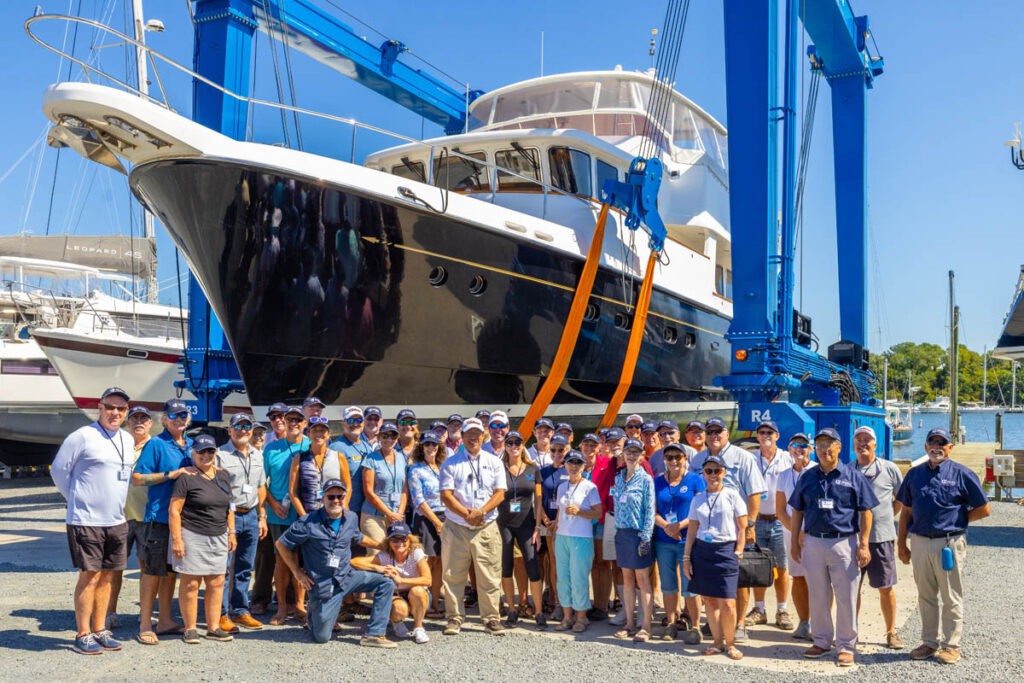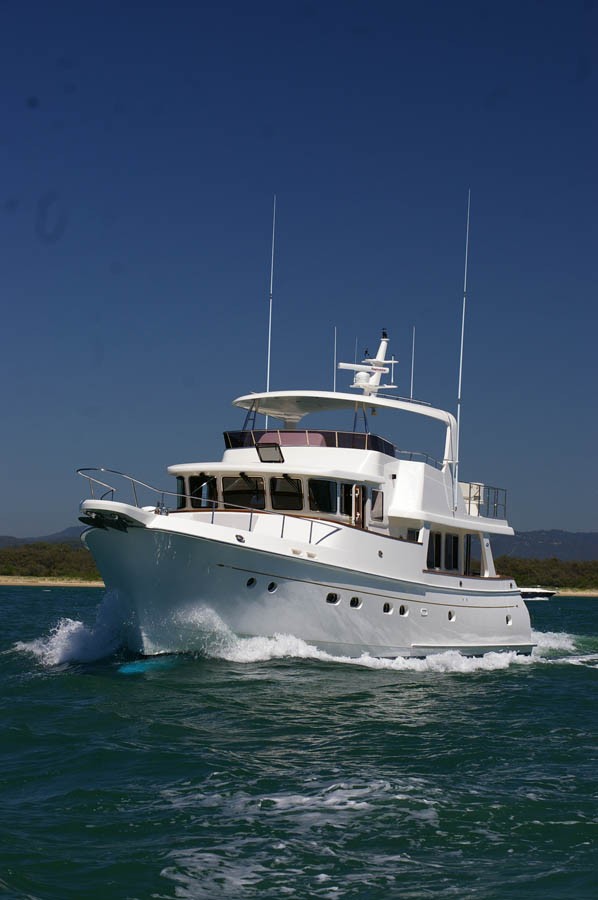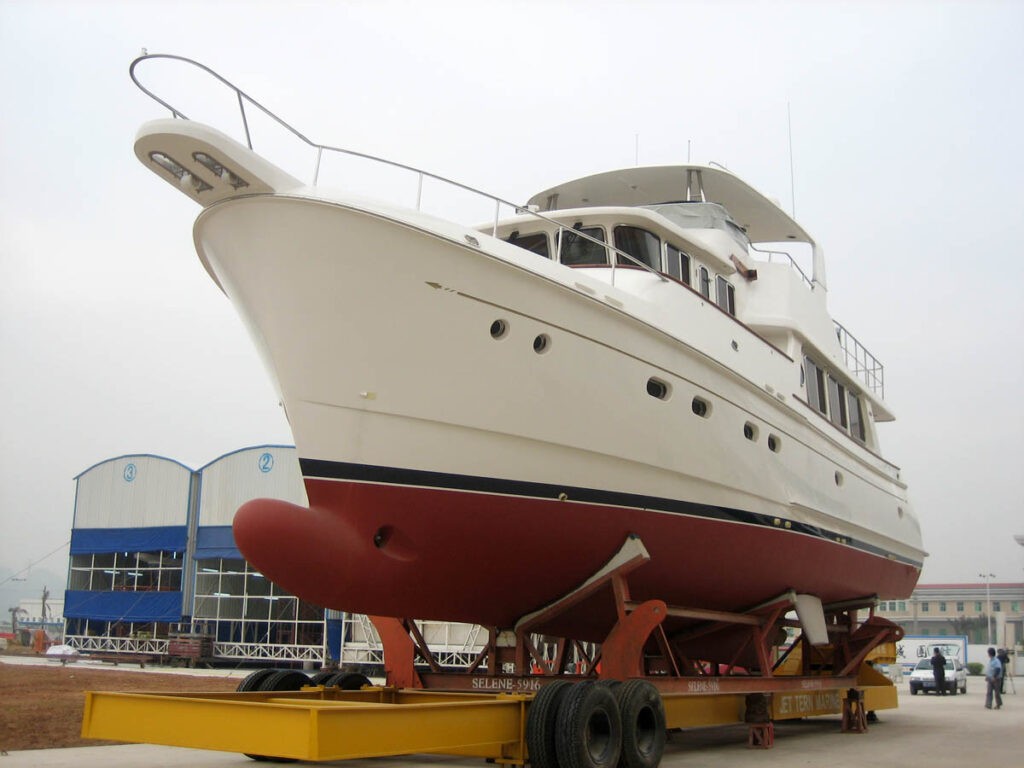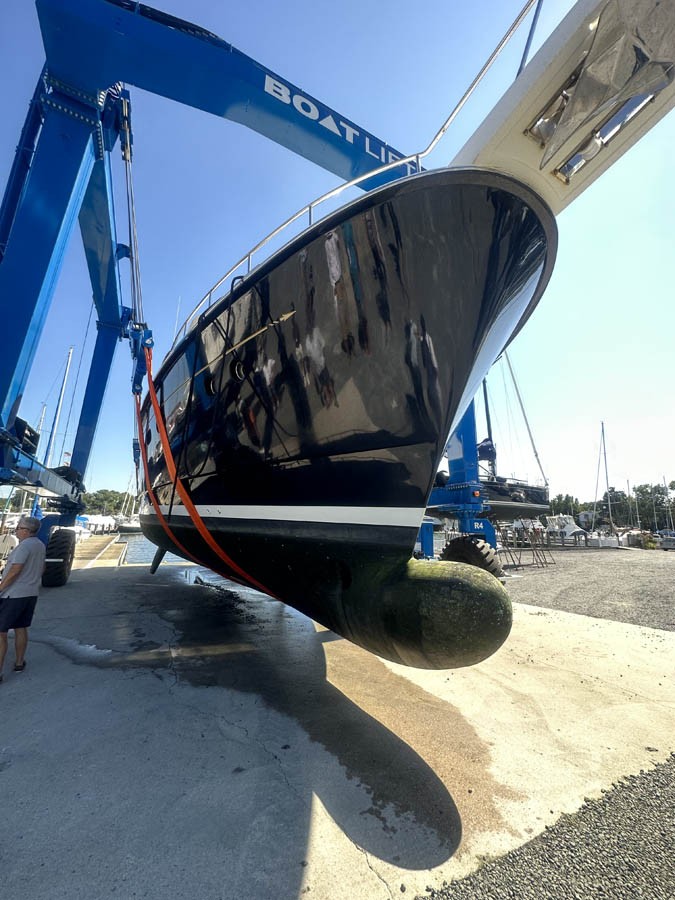The Ingenious Bulbous Bow: Enhancing Performance and Efficiency at Sea
At first glance, Selene Yachts may remind you more of a “ship” than a “boat,” especially when considering the larger models. This resemblance is not coincidental since Selene’s vessels are designed to venture across vast oceans with unparalleled comfort and safety.

Full-displacement hulls, slower-turning propellers, large rudders, and stabilizing systems are all key elements that Selene shares with deep-sea commercial vessels. But there’s another design feature often incorporated into prominent Selene models—the bulbous bow, a feature nearly ubiquitous on larger commercial ships. While you may come across a simple description of its benefits in a brochure or website, such as “The addition of a bulbous bow improves ride comfort and extends cruising range,” there’s much more to the story behind this unassuming appendage.

At the recent Selene Rendezvous in Solomon Island, an engaging technical session was led by Howard Chen, the founder and lead designer of Selene Yachts. In front of a crowd of Selene owners, Howard Chen used the owners of ‘Coffee Break’ a Selene Classic Explorer 60 that was lifted out of the water to detail the sophisticated design elements of the Selene Hull.

The session focused on the intricate design features of the hull that contribute to the yacht’s performance. Howard Chen explained the rationale behind the Deep Hull design and Bulbous Bow emphasizing its impact on stability and efficiency in various sea conditions. The Bulbous Bow, a distinctive feature of the Selene yachts, was discussed in terms of its hydrodynamic benefits, reducing wave resistance and enhancing fuel efficiency.
Further, Chen elaborated on the Merging Chin design, a unique element that contributes to better wave-piercing and smoother rides. The Cruiser Stern was highlighted for its classic aesthetic appeal while providing functional advantages in terms of seaworthiness and wake flow.
A notable aspect of the presentation was the detailed explanation of the yacht’s Center Keel. This feature, fully protected and integrated into the hull design, adds an extra layer of safety and stability. Howard Chen also pointed out how the stabilizer fins are strategically shielded by the keel and fender rails, an innovative approach to protect critical components while cruising.
The session was not just a showcase of Selene’s design philosophy but also an opportunity for the owners to gain a deeper understanding of the technical aspects of their yachts. This technical discourse provided valuable insights, allowing owners to appreciate the engineering prowess and meticulous design considerations that go into each Selene yacht.
Diving deeper into the history of the bulbous bow, the concept dates back to ancient times when it was used for more aggressive purposes. The Greek trireme, equipped with a bulbous bow serving as a battering ram, played a decisive role in naval warfare, as demonstrated in the Battle of Salamis in 480 BC.
In the early 1900s, wartime vessels began adopting bulbous bow designs for speed, eventually leading to scientific studies exploring the dynamics at play. By the 1930s, bulbous bows resembling those we see today became a common feature on passenger and commercial ships. Initially, the focus was on speed, but over time, they proved to be essential for efficiency and reduced fuel consumption.
Today, it’s challenging to find a tanker, cargo ship, or passenger ferry that doesn’t benefit from the bulbous bow’s design, leading to significant reductions in power requirements of at least 5% and substantial fuel savings over a vessel’s lifetime.

The primary purpose of the bulbous bow is to create wave interference, allowing the ship to move faster. By generating an additional wave that partially cancels out the bow wave created by the hull, it significantly reduces hydrodynamic drag and enhances a vessel’s efficiency. Additionally, it minimizes squatting at the stern at higher speeds and reduces pitching, resulting in a smoother ride.

While designers typically aim for a reduction in resistance of around 8-10% when incorporating a bulbous bow, testing of the Selene 60 demonstrated a remarkable 15% reduction in wave resistance and a significant 20% decrease in pitch at 9 knots, precisely within the optimal performance range for that particular hull.

Selene recognized these benefits early on and the Selene 60, 62, and 66 and larger models continue to benefit from this design feature, demonstrating substantial improvements in wave reduction and pitch deceleration during testing.

However, the bulbous bow is not without its challenges. Anchor handling can be a bit tricky, and depending on the hull shape and other factors, it may lead to increased noise in rough seas, primarily in smaller yachts.
Selene’s approach is to offer the bulbous bow as an option on larger models, allowing buyers to consider their cruising habits and locations before making a decision. Most larger Selene vessels leave the factory with a bulbous bow attached.

The advantages of a bulbous bow are well-documented and ongoing research aims to optimize its design for vessels like Selene. Computer modeling allows naval architects to explore various designs, adjusting factors such as cross-sectional area, shape, and length to maximize benefits while minimizing drawbacks.
For those in a hurry to experience the advantages of a bulbous bow, aftermarket installation is an option worth considering. Just remember, it’s there before dropping anchor!
